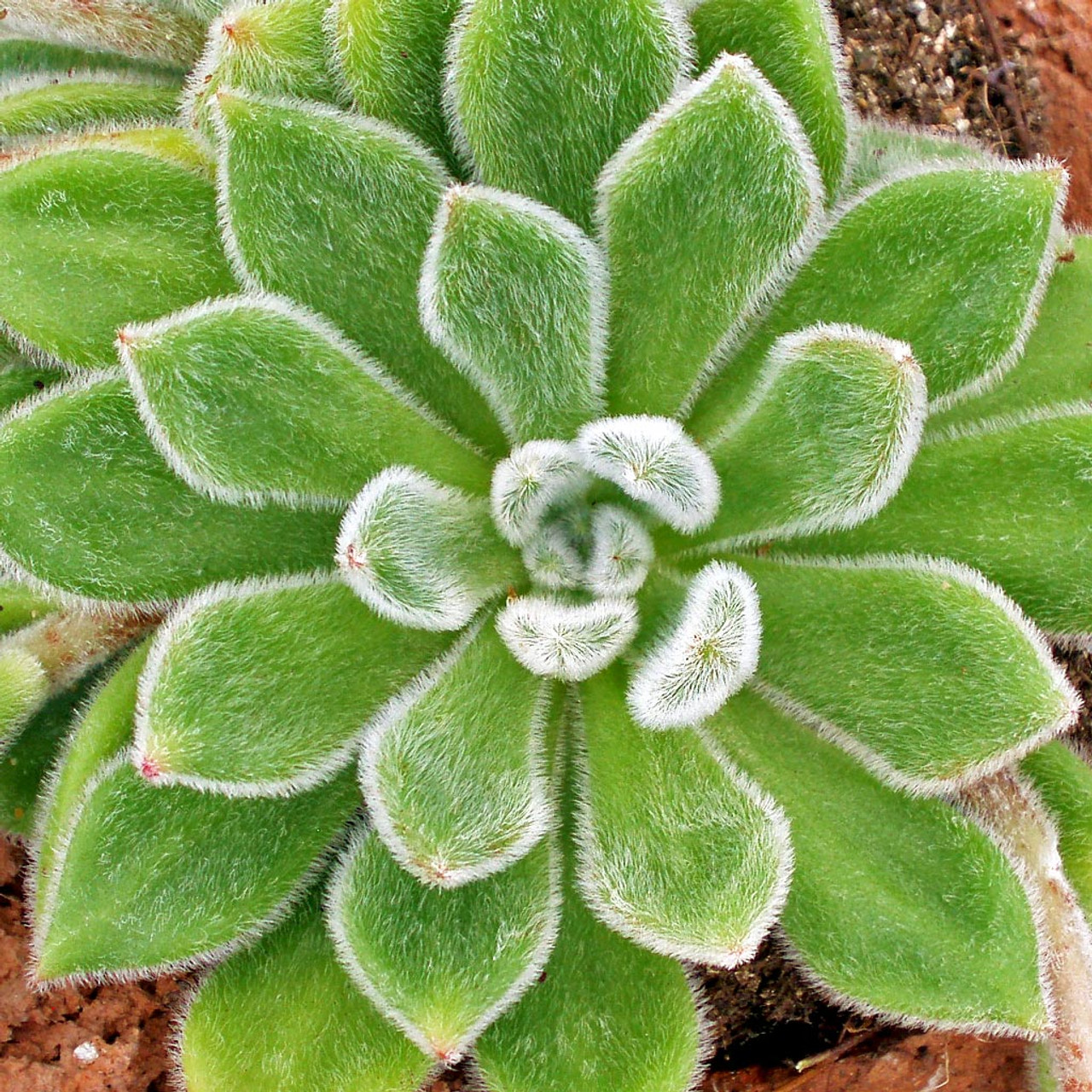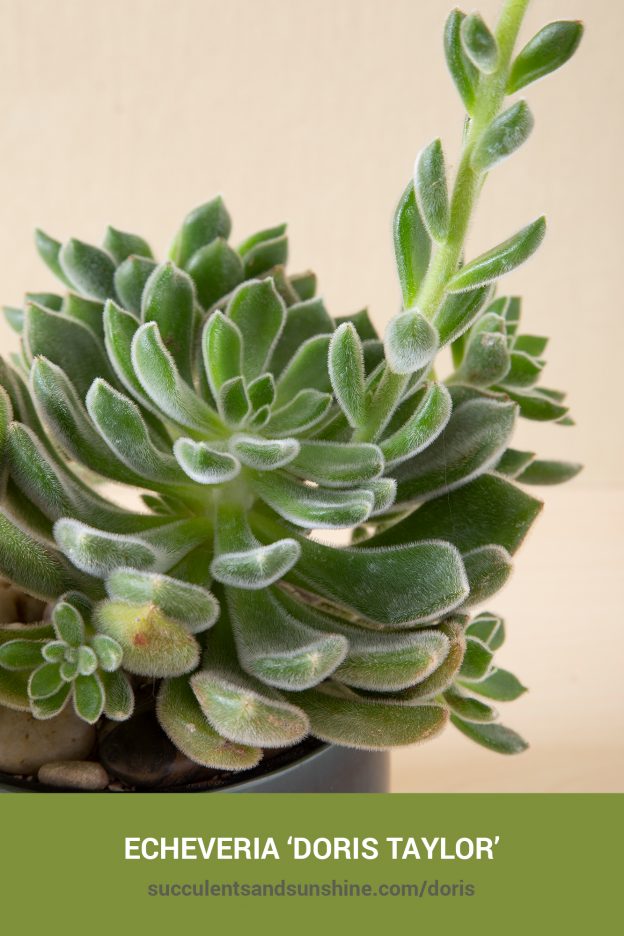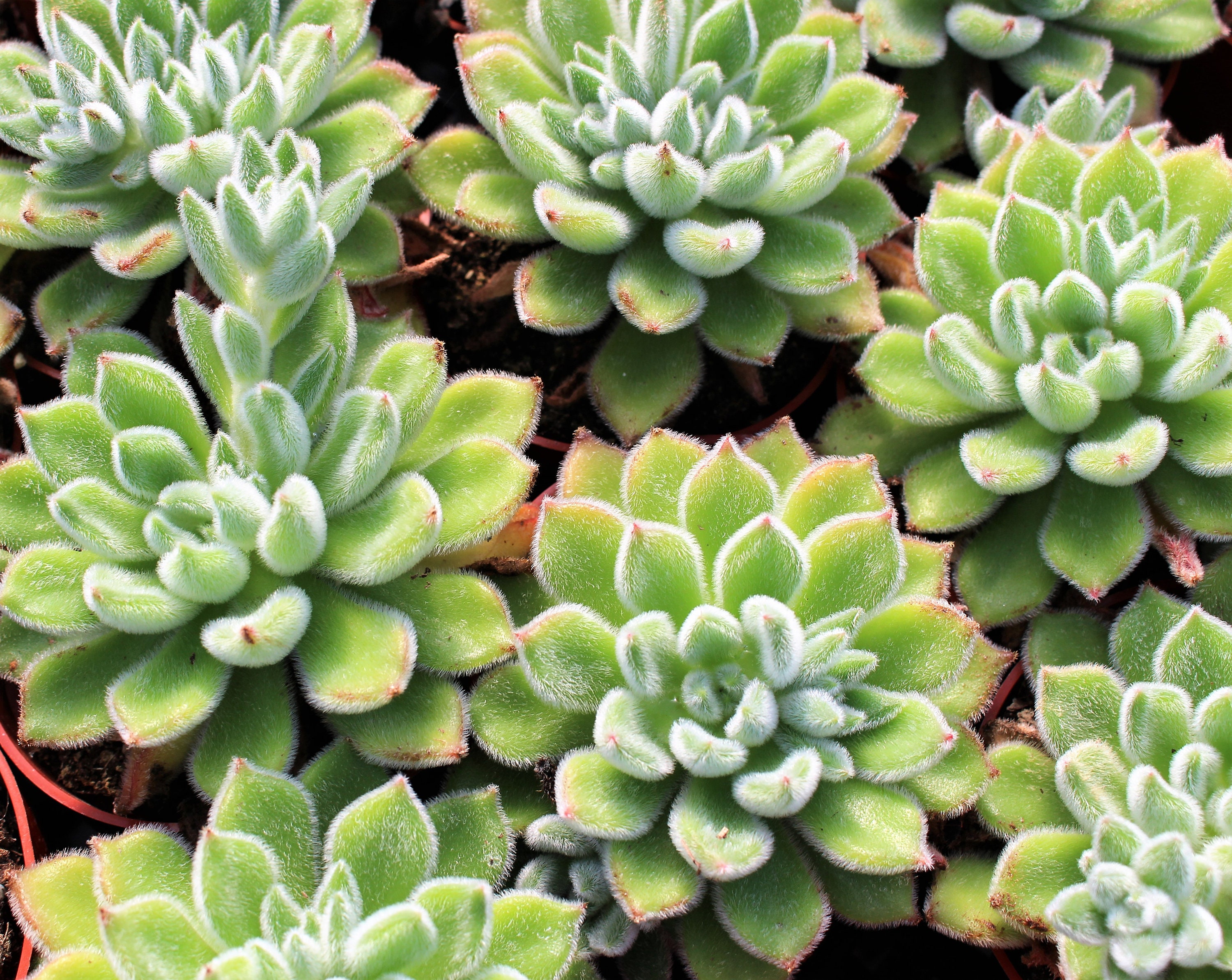This popular Echeveria hybrid is a favorite of many succulent growers. Its green leaves are covered in delicate white “hairs” that give it a soft, fuzzy look. When exposed to the right amount of stress, the leaf tips become a deep, rich red. This plant is ideal for indoor growers.
Table of Contents
Care and Propagation Information
You can use ‘Doris Taylor’ succulents to create unique wreaths and bouquets. Look out for the orange blossoms that appear in the Spring and Autumn.
Watering
For best results with Doris Taylor, it is recommended to employ the “soak and dry” approach and allow the soil to dry out completely between watering sessions. This is the usual watering requirement for a succulent.
Where to Plant
If you live in an area that experiences temperatures below 20° F (-6.7° C), it is advisable to put Echeveria ‘Doris Taylor’ in a pot that can be brought indoors. This succulent does best in an environment with either full or partial sunlight.
How to Propagate Echeveria ‘Doris Taylor’
Echeveria ‘Doris Taylor’ can be propagated by taking cuttings and beheading. To do so, it is important to use a sterile, sharp knife or pair of scissors. Cut off a stem from the main plant and allow it to form a callous over several days before putting it onto soil with excellent drainage. It should be watered only when the soil is completely dry.
Additional information
Care and Propagation Information
General Care for Echeveria ‘Doris Taylor’
You can use ‘Doris Taylor’ succulents to create unique wreaths and bouquets. Look out for the orange blossoms that appear in the Spring and Autumn.
Watering
For best results with Doris Taylor, it is recommended to employ the “soak and dry” approach and allow the soil to dry out completely between watering sessions. This is the usual watering requirement for a succulent.
Where to Plant
If you live in an area that experiences temperatures below 20° F (-6.7° C), it is advisable to put Echeveria ‘Doris Taylor’ in a pot that can be brought indoors. This succulent does best in an environment with either full or partial sunlight.
How to Propagate Echeveria ‘Doris Taylor’
Echeveria ‘Doris Taylor’ can be propagated by taking cuttings and beheading. To do so, it is important to use a sterile, sharp knife or pair of scissors. Cut off a stem from the main plant and allow it to form a callous over several days before putting it onto soil with excellent drainage. It should be watered only when the soil is completely dry.
Additional information
In winter, it is not unusual for ‘Doris Taylor’ to lose its leaves. To reduce the risk of mealy bug infestation, make sure to keep the pot tidy by removing any dead leaves.
FAQ
How often should you water an Echeveria?
Echeveria should be watered regularly from spring to fall, but less so in the winter. Monitor the soil and water when it begins to dry out. A good rule of thumb is to water the plant every one to two months.
How long can Echeveria go without water?
Indoor succulents can go for up to one to three months without needing to be watered, since the elements such as wind and sunlight don’t dry out the soil as quickly indoors. In cooler climates, soil typically stays moist for longer periods of time during fall and winter.
Is Echeveria full sun?
Echeveria thrives when exposed to sunlight, which helps to form their distinctive rosettes and maintain the vibrancy of their leaves. When kept indoors, they should be placed in a very brightly lit area. If kept outdoors, they should be placed in a spot that receives partial to full sun.
Do Echeveria succulents like sun or shade?
You need to make sure your echeveria is exposed to at least six hours of direct sunlight daily. If it doesn’t get enough light, the plant will become spindly and lose its attractive, tight shape.
How do you care for Echeveria Doris Taylor?
It is suggested to keep Doris Taylor in a shaded area during the hottest days of summer. During the growing season, water more frequently but still sparingly, and water even less when the plant is dormant during the winter.



